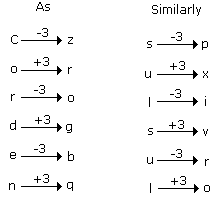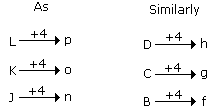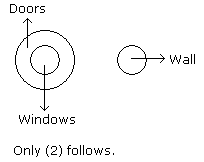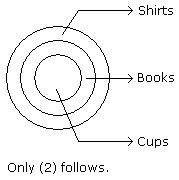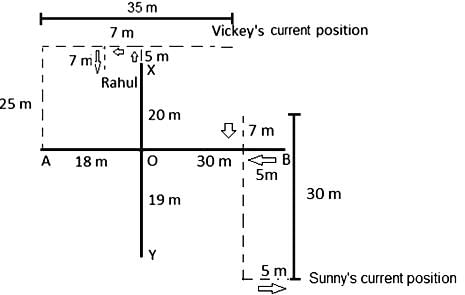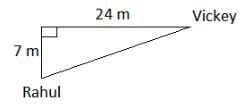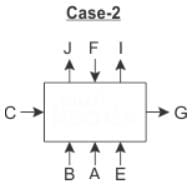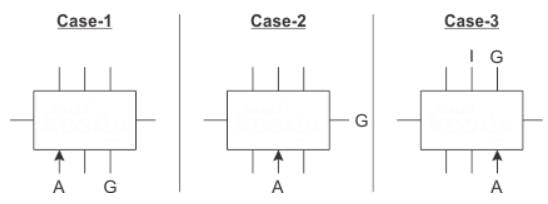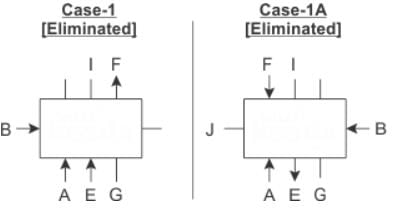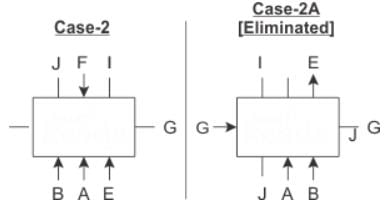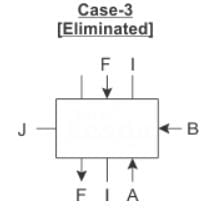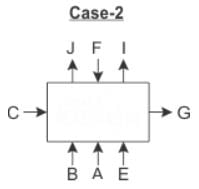Air Force Group Y Mock Test - 6 - Airforce X Y / Indian Navy SSR MCQ
30 Questions MCQ Test - Air Force Group Y Mock Test - 6
Find out the Synonym of the following word:
STRINGENT
Read the each sentence to find out whether there is any grammatical error in it. The error, if any will be in one part of the sentence. The letter of that part is the answer. If there is no error, the answer is 'D'. (Ignore the errors of punctuation, if any).
In the following questions four alternatives are given for the idiom/phrase italicised and underlined in the sentence. Choose the alternative which best expresses the meaning of idiom/phrase.
Q. It is no longer easy to strike gold in Shakespeare's research since much work has already been done on him.
The Great Wall Space Agency’s recent attempts to launch a man into space, a majorgoal of their space program for the past few years, has not substantially decreasedthe gaps existing between the technology-rich and technology-poor cities aroundthe space center.
Directions: Rearrange the following five sentences in the proper sequence to form a coherent paragraph, and then answer the question given below.
(i) If no evil had existed in this world, man would never have dreamt of those numerous divinities to which he has rendered such various modes of worship.
(ii) The man, always contented, would only have occupied himself with satisfying his wants; with enjoying the present, with feeling the influence of objects, that would unceasingly warn him of his existence in a mode that he must necessarily approve; nothing would alarm his heart; everything would be analogous to his existence.
(iii) These feelings can only be the consequence of some troublesome sensation, which must have previously affected him, or which by disturbing the harmony of his machine, has interrupted the course of his happiness; which has shown him he is naked.
(iv) He would neither know fear, experience distrust, nor have in quietude for the future.
(v) If nature had permitted him easily to satisfy all his regenerating wants, if she had given him none but agreeable sensations, his days would have uninterruptedly rolled on in perpetual uniformity; he would never have discovered his own nakedness.
Q. Which of the following should be the FIFTH sentence after rearrangement?
Directions: Rearrange the following five sentences in the proper sequence to form a coherent paragraph, and then answer the question given below.
(i) If no evil had existed in this world, man would never have dreamt of those numerous divinities to which he has rendered such various modes of worship.
(ii) The man, always contented, would only have occupied himself with satisfying his wants; with enjoying the present, with feeling the influence of objects, that would unceasingly warn him of his existence in a mode that he must necessarily approve; nothing would alarm his heart; everything would be analogous to his existence.
(iii) These feelings can only be the consequence of some troublesome sensation, which must have previously affected him, or which by disturbing the harmony of his machine, has interrupted the course of his happiness; which has shown him he is naked.
(iv) He would neither know fear, experience distrust, nor have in quietude for the future.
(v) If nature had permitted him easily to satisfy all his regenerating wants, if she had given him none but agreeable sensations, his days would have uninterruptedly rolled on in perpetual uniformity; he would never have discovered his own nakedness.
Q. Which of the following should be the SECOND sentence after rearrangement?
Direction: In the questions given below a sentence is given with two blanks in each. Corresponding to each question two columns are given with three words in each column. Which combination of words from the two columns will perfectly fit into the blanks to make the sentence contextually correct and meaningful?
A patient has the right to know all the rates charged for specific services in a hospital, hospitals should boldly ____________ the cost of procedures in local and English language and patients should pay the fees agreed upon and never ______________ to violence.
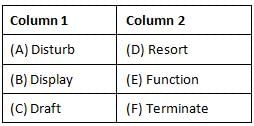
Direction: Each question below has one blank, which is indicating that something has been omitted. Find out which option can be used to fill up the blank in the sentence in the same sequence to make it meaningfully complete.
There has been _____________ interest among retail investors in ETF, thanks to the underperformance of the actively-managed large-cap equity funds.
Choose the correct active voice for the given passive voice sentence:
Passive Voice: The letter will be sent by Jane.
Directions: Read the passage carefully and answer the questions that follow:
There is now no denying that the new government takes office amid a clear economic slowdown. The first macro data set released showed an under-performing economy with GDP growth falling to 5.8% in the fourth quarter of 2018-19 and pulling down the overall growth for the fiscal to a five-year low of 6.8%. Growth in gross value added (GVA), which is GDP minus taxes and subsidies, fell to 6.6% in 2018-19, pointing to a serious slowdown. If further confirmation were needed, the growth in core sector output — a set of eight major industrial sectors — fell to 2.6% in April, compared to 4.7% in the same month last year. And finally, unemployment data, controversially suppressed by the Union government so far, showed that joblessness was at a 45-year high of 6.1% in 2017-18. These numbers highlight the challenges ahead in drafting the Budget for 2019-20. The economy is beset by a consumption slowdown as reflected in the falling sales of everything from automobiles to consumer durables, even fast-moving consumer goods. Private investment is not taking off, while government spending, which kept the economy afloat during the last NDA government, was cut back in the last quarter of 2018-19 to meet the fiscal deficit target of 3.4%.
The good news is that inflation is undershooting the target and oil prices are on the retreat again. But the rural economy remains in distress, as seen by the 2.9% growth in agriculture last fiscal; the sector needs a good monsoon this year to bounce back. Overall economic growth in the first quarter of this fiscal is likely to remain subdued, and any improvement is unlikely until the late second quarter or the early third. There are not too many options before the new Finance Minister. In the near term, she has to boost consumption, which means putting more money in the hands of people. That, in turn, means cutting taxes, which is not easy given the commitment to rein in the fiscal deficit. In the medium term, Ms. Sitharaman has to take measures to boost private investment even as she opens up public spending again. These call for major reforms, starting with land acquisition and labour, corporate taxes by reducing exemptions and dropping rates, and nursing banks back to health. On the table will be options such as further recapitalisation of the ailing banks, and consolidation. The question, though, is where the money will come from. With tax revenues likely to be subdued owing to the slowdown, the Centre will have to look at alternative sources such as disinvestment. There may be little choice but to go big on privatisation. A rate cut by the Reserve Bank of India, widely expected this week, would certainly help boost sentiment. But it is the Budget that will really set the tone for the economy
Q. As per the passage, which of the following reforms has NOT been mentioned in the passage to improve the investment climate?
Directions: Read the passage carefully and answer the questions that follow:
There is now no denying that the new government takes office amid a clear economic slowdown. The first macro data set released showed an under-performing economy with GDP growth falling to 5.8% in the fourth quarter of 2018-19 and pulling down the overall growth for the fiscal to a five-year low of 6.8%. Growth in gross value added (GVA), which is GDP minus taxes and subsidies, fell to 6.6% in 2018-19, pointing to a serious slowdown. If further confirmation were needed, the growth in core sector output — a set of eight major industrial sectors — fell to 2.6% in April, compared to 4.7% in the same month last year. And finally, unemployment data, controversially suppressed by the Union government so far, showed that joblessness was at a 45-year high of 6.1% in 2017-18. These numbers highlight the challenges ahead in drafting the Budget for 2019-20. The economy is beset by a consumption slowdown as reflected in the falling sales of everything from automobiles to consumer durables, even fast-moving consumer goods. Private investment is not taking off, while government spending, which kept the economy afloat during the last NDA government, was cut back in the last quarter of 2018-19 to meet the fiscal deficit target of 3.4%.
The good news is that inflation is undershooting the target and oil prices are on the retreat again. But the rural economy remains in distress, as seen by the 2.9% growth in agriculture last fiscal; the sector needs a good monsoon this year to bounce back. Overall economic growth in the first quarter of this fiscal is likely to remain subdued, and any improvement is unlikely until the late second quarter or the early third. There are not too many options before the new Finance Minister. In the near term, she has to boost consumption, which means putting more money in the hands of people. That, in turn, means cutting taxes, which is not easy given the commitment to rein in the fiscal deficit. In the medium term, Ms. Sitharaman has to take measures to boost private investment even as she opens up public spending again. These call for major reforms, starting with land acquisition and labour, corporate taxes by reducing exemptions and dropping rates, and nursing banks back to health. On the table will be options such as further recapitalisation of the ailing banks, and consolidation. The question, though, is where the money will come from. With tax revenues likely to be subdued owing to the slowdown, the Centre will have to look at alternative sources such as disinvestment. There may be little choice but to go big on privatisation. A rate cut by the Reserve Bank of India, widely expected this week, would certainly help boost sentiment. But it is the Budget that will really set the tone for the economy
Q. As per the passage, which of the following would lead to ‘putting more money in the hands of people’?
I. Decrease in tax rates.
II. Increase in inflation
III. Increase in private investment
Directions: Read the passage carefully and answer the questions that follow:
There is now no denying that the new government takes office amid a clear economic slowdown. The first macro data set released showed an under-performing economy with GDP growth falling to 5.8% in the fourth quarter of 2018-19 and pulling down the overall growth for the fiscal to a five-year low of 6.8%. Growth in gross value added (GVA), which is GDP minus taxes and subsidies, fell to 6.6% in 2018-19, pointing to a serious slowdown. If further confirmation were needed, the growth in core sector output — a set of eight major industrial sectors — fell to 2.6% in April, compared to 4.7% in the same month last year. And finally, unemployment data, controversially suppressed by the Union government so far, showed that joblessness was at a 45-year high of 6.1% in 2017-18. These numbers highlight the challenges ahead in drafting the Budget for 2019-20. The economy is beset by a consumption slowdown as reflected in the falling sales of everything from automobiles to consumer durables, even fast-moving consumer goods. Private investment is not taking off, while government spending, which kept the economy afloat during the last NDA government, was cut back in the last quarter of 2018-19 to meet the fiscal deficit target of 3.4%.
The good news is that inflation is undershooting the target and oil prices are on the retreat again. But the rural economy remains in distress, as seen by the 2.9% growth in agriculture last fiscal; the sector needs a good monsoon this year to bounce back. Overall economic growth in the first quarter of this fiscal is likely to remain subdued, and any improvement is unlikely until the late second quarter or the early third. There are not too many options before the new Finance Minister. In the near term, she has to boost consumption, which means putting more money in the hands of people. That, in turn, means cutting taxes, which is not easy given the commitment to rein in the fiscal deficit. In the medium term, Ms. Sitharaman has to take measures to boost private investment even as she opens up public spending again. These call for major reforms, starting with land acquisition and labour, corporate taxes by reducing exemptions and dropping rates, and nursing banks back to health. On the table will be options such as further recapitalisation of the ailing banks, and consolidation. The question, though, is where the money will come from. With tax revenues likely to be subdued owing to the slowdown, the Centre will have to look at alternative sources such as disinvestment. There may be little choice but to go big on privatisation. A rate cut by the Reserve Bank of India, widely expected this week, would certainly help boost sentiment. But it is the Budget that will really set the tone for the economy
Q. Which of the following, as per the passage, indicate a slowdown in the Indian economy?
I. Fall in sale levels of consumer durables
II. Negative growth in the core sector output
III. Fall in inflations levels
Directions: Read the passage carefully and answer the questions that follow:
There is now no denying that the new government takes office amid a clear economic slowdown. The first macro data set released showed an under-performing economy with GDP growth falling to 5.8% in the fourth quarter of 2018-19 and pulling down the overall growth for the fiscal to a five-year low of 6.8%. Growth in gross value added (GVA), which is GDP minus taxes and subsidies, fell to 6.6% in 2018-19, pointing to a serious slowdown. If further confirmation were needed, the growth in core sector output — a set of eight major industrial sectors — fell to 2.6% in April, compared to 4.7% in the same month last year. And finally, unemployment data, controversially suppressed by the Union government so far, showed that joblessness was at a 45-year high of 6.1% in 2017-18. These numbers highlight the challenges ahead in drafting the Budget for 2019-20. The economy is beset by a consumption slowdown as reflected in the falling sales of everything from automobiles to consumer durables, even fast-moving consumer goods. Private investment is not taking off, while government spending, which kept the economy afloat during the last NDA government, was cut back in the last quarter of 2018-19 to meet the fiscal deficit target of 3.4%.
The good news is that inflation is undershooting the target and oil prices are on the retreat again. But the rural economy remains in distress, as seen by the 2.9% growth in agriculture last fiscal; the sector needs a good monsoon this year to bounce back. Overall economic growth in the first quarter of this fiscal is likely to remain subdued, and any improvement is unlikely until the late second quarter or the early third. There are not too many options before the new Finance Minister. In the near term, she has to boost consumption, which means putting more money in the hands of people. That, in turn, means cutting taxes, which is not easy given the commitment to rein in the fiscal deficit. In the medium term, Ms. Sitharaman has to take measures to boost private investment even as she opens up public spending again. These call for major reforms, starting with land acquisition and labour, corporate taxes by reducing exemptions and dropping rates, and nursing banks back to health. On the table will be options such as further recapitalisation of the ailing banks, and consolidation. The question, though, is where the money will come from. With tax revenues likely to be subdued owing to the slowdown, the Centre will have to look at alternative sources such as disinvestment. There may be little choice but to go big on privatisation. A rate cut by the Reserve Bank of India, widely expected this week, would certainly help boost sentiment. But it is the Budget that will really set the tone for the economy
Q. Which of the following is / are true as per the passage?
I. There is going to be a definite rate cut by the RBI in the coming week.
II. The rural economy is in better shape than the urban economy.
III. Government spending has increased in the last quarter of 2018-19.
Directions: Read the passage carefully and answer the questions that follow:
There is now no denying that the new government takes office amid a clear economic slowdown. The first macro data set released showed an under-performing economy with GDP growth falling to 5.8% in the fourth quarter of 2018-19 and pulling down the overall growth for the fiscal to a five-year low of 6.8%. Growth in gross value added (GVA), which is GDP minus taxes and subsidies, fell to 6.6% in 2018-19, pointing to a serious slowdown. If further confirmation were needed, the growth in core sector output — a set of eight major industrial sectors — fell to 2.6% in April, compared to 4.7% in the same month last year. And finally, unemployment data, controversially suppressed by the Union government so far, showed that joblessness was at a 45-year high of 6.1% in 2017-18. These numbers highlight the challenges ahead in drafting the Budget for 2019-20. The economy is beset by a consumption slowdown as reflected in the falling sales of everything from automobiles to consumer durables, even fast-moving consumer goods. Private investment is not taking off, while government spending, which kept the economy afloat during the last NDA government, was cut back in the last quarter of 2018-19 to meet the fiscal deficit target of 3.4%.
The good news is that inflation is undershooting the target and oil prices are on the retreat again. But the rural economy remains in distress, as seen by the 2.9% growth in agriculture last fiscal; the sector needs a good monsoon this year to bounce back. Overall economic growth in the first quarter of this fiscal is likely to remain subdued, and any improvement is unlikely until the late second quarter or the early third. There are not too many options before the new Finance Minister. In the near term, she has to boost consumption, which means putting more money in the hands of people. That, in turn, means cutting taxes, which is not easy given the commitment to rein in the fiscal deficit. In the medium term, Ms. Sitharaman has to take measures to boost private investment even as she opens up public spending again. These call for major reforms, starting with land acquisition and labour, corporate taxes by reducing exemptions and dropping rates, and nursing banks back to health. On the table will be options such as further recapitalisation of the ailing banks, and consolidation. The question, though, is where the money will come from. With tax revenues likely to be subdued owing to the slowdown, the Centre will have to look at alternative sources such as disinvestment. There may be little choice but to go big on privatisation. A rate cut by the Reserve Bank of India, widely expected this week, would certainly help boost sentiment. But it is the Budget that will really set the tone for the economy
Q. Which of the following is the closest in meaning to the word beset?
Directions to Solve
In each of the following questions, five words have been given out of which four are alike in some manner, while the fifth one is different. Choose the word which is different from the rest.
Question -
Choose the word which is different from the rest.
Directions to Solve
In each of the following questions find out the alternative which will replace the question mark.
Question -
Corden : zrogbq :: ? : pxivro
Directions to Solve
In each of the following questions find out the alternative which will replace the question mark.
Question -
LKJ : pon :: ? : hgf
Directions to Solve
In each of the following questions two statements are given and these statements are followed by two conclusions numbered (1) and (2). You have to take the given two statements to be true even if they seem to be at variance from commonly known facts. Read the conclusions and then decide which of the given conclusions logically follows from the two given statements, disregarding commonly known facts.
Question -
Statements: All the windows are doors. No door is a wall.
Conclusions:
- Some windows are walls.
- No wall is a door.
Directions to Solve
In each of the following questions two statements are given and these statements are followed by two conclusions numbered (1) and (2). You have to take the given two statements to be true even if they seem to be at variance from commonly known facts. Read the conclusions and then decide which of the given conclusions logically follows from the two given statements, disregarding commonly known facts.
Question -
Statements: All cups are books. All books are shirts.
Conclusions:
- Some cups are not shirts.
- Some shirts are cups.
Introducing a boy, a girl said, "He is the son of the daughter of the father of my uncle." How is the boy related to the girl?
Find the one which does not belong to that group ?
The mountains which are not a part of the Himalayan chain:
Ratio between the lateral surface area and the total surface area of a right circular cylinder is 3 : 5. If the lateral surface area is 1848 sq. m, then volume of the cylinder is (in cubic m).
Directions: Study the following information and answer the question given below it.
There is an XY axis in such a way that X is in north and Y is in south direction. There is an AB axis in such a way that A is in west direction and B is in east direction. AB axis and XY axis intersect at a point O in such a way that XO is 20 m, OY is 19 m, OA is 18 m and OB is 30 m. Sunny starts from point B and walks 5 m towards west, then turns to his right and walks 7 m, then walks 30 m in south direction, and finally turns to his left and walks 5 m. Vickey starts from point A and walks 25 m in north direction, and then turns right and walks 35 m in east direction. Rahul starts from point X and walks 5 m in north direction, then turns to his left and walks 7 m, and again turns to his left and walks 7 m.
Q. What is the distance between the current positions of Rahul and Vickey?
Who chaired the 50th meeting of the GST Council held in New Delhi?
Directions: Read the following information carefully and answer the questions given beside.
Eight persons viz. A, B, C, E, F, G, I and J sit around a rectangular table such that three persons sit on each longer side and one person sits on each shorter side. Nobody sits at the corners. The persons whose name starts with vowel do not sit on the shorter side of the table. Three of them face away from centre while the rest five face towards the centre.
B, who faces centre sits second to the left of E. J is on the immediate right of F, who is at a gap of two persons from E. Neither C nor A face away from centre. The immediate neighbors of F face away from centre. G is second to the right of A. I is on the immediate left of F. I is neither adjacent to A nor to C. E is adjacent to G.
Q. Who among the following faces away from centre?
I. J
II. F
III. I



